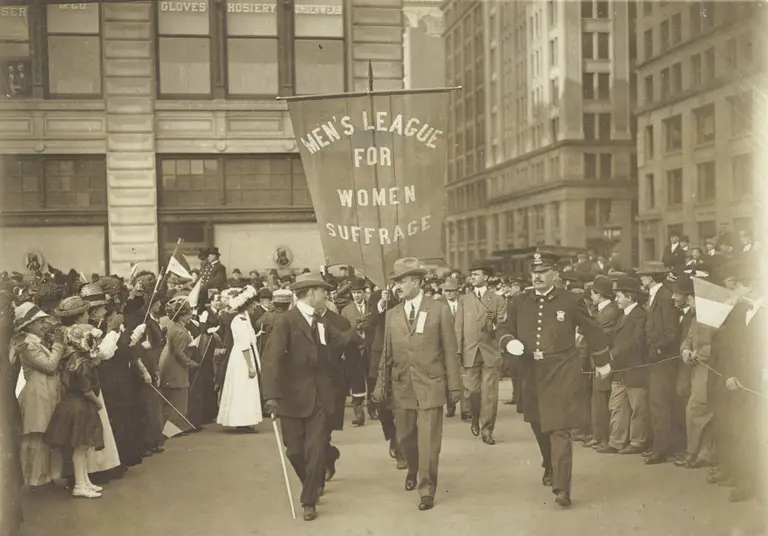Thousands of Soviet espionage artifacts on view at Chelsea’s new KGB Museum
Get a preview

Mort Gerberg, “No, not a ‘D’ – it’s a ‘B’! You know, like in Beowulf…Botticelli…Brahams…”, cartoon for the Saturday Review, 1965 Courtesy of the New York Historical Society

Irma and Paul Milstein Division of United States History, Local History and Genealogy, The New York Public Library. (1887 – 1964). Parks – Riverside Park – West 122nd Street; Via NYPL Digital Collections

Photo of Harriet Tubman Memorial, “Swing Low,” in Harlem via denisbin on Flickr

The Apollo Theater c. 1946, via Library of Congress

First Earth Day, April 22, 1970. View of crowds in Union Square, NYC Parks Photo Archive, Neg #53262_28. All of the photos in this post are courtesy of the Parks Department.

Photo of Federal Hall and the George Washington statue, via John Schiller/Flickr cc

Gum, and Gum disposal, advertising on the 8th Avenue IND, via The Municipal Archives

Goat carriages in Central Park via Library of Congress

All photos included in this post were taken at Co-op City in the early 1970s and are courtesy of Co-op City

Andy Warhol in 1968, via Wiki Commons

“Manhattan Island in the Sixteenth Century,” from the Memorial History of New York, 1892, via NYPL

John, a third generation Mohawk ironworker who helped raise One World Trade, photographed by Melissa Cacciola, via Melisssa Cacciola

Plans for a never-built “Italian Fountain” at the Bronx Zoo, disapproved by the Commission Feb. 10, 1903; DC French’s “Brooklyn” and a Guide to Prospect Park via PDC

Gershwin medallion on Riverside Drive, photos courtesy of Melissa Stutts for the Historic Landmarks Preservation Center

Yorkville Theater, 86th Street between Lexington and Third, via Wikimedia

Members of the Men’s League for Women’s Suffrage March in a 1915 Suffrage Parade, via the Carrie Chapman Catt Papers at Bryn Mawr College

Photo by Phil Roeder / Flickr

The Hill-Stead Museum via Flickr cc